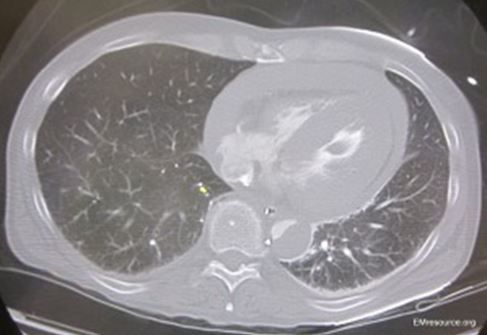- Clinical Technology
- Adult Immunization
- Hepatology
- Pediatric Immunization
- Screening
- Psychiatry
- Allergy
- Women's Health
- Cardiology
- Pediatrics
- Dermatology
- Endocrinology
- Pain Management
- Gastroenterology
- Infectious Disease
- Obesity Medicine
- Rheumatology
- Nephrology
- Neurology
- Pulmonology
Seen in the ED: Cardiac Arrest
The patient is a man in his mid-60s seen in the ED for dyspnea and diaphoresis which began an hour ago and came on suddenly. He has no chest pain. Can you Dx?
History of present illness
A man in his mid-60s is transported to the emergency department with dyspnea and diaphoresis. His symptoms started about an hour prior to arrival. He denies any chest discomfort, fever, or leg swelling and states his symptoms started suddenly. He has a history of hypertension and a deep vein thrombosis (DVT) years ago after a knee surgery.
Vital signs and physical examination
- Blood pressure (BP) 80/68 mm Hg
- Pulse 124 beats/min
- Respirations 28/min
- Temperature 99.0 °F
- Pulse-oximetry reading 99%
The patient appears acutely ill with labored respiration and diaphoresis. Findings on head and neck examination are notable for jugular vein distension and the upper torso and face appear plethoric. Lungs have a few scattered rhonchi but are otherwise clear. Heart rate is in tachycardia without extra sounds. The abdomen is nontender and the legs have no edema.
Testing
- ECG shows tachycardia and nonspecific changes
- Chest x-ray results appear normal
- On suspicion of pulmonary embolism (PE), you order a CT scan of the chest (result below) and debate whether or not to start empiric heparin.
CT examination of chest

Clinical course
The patient’s nurse tells you he is unresponsive. You rush to the bedside and find the patient to be in pulseless electrical activity (PEA) at a rate of 145.
